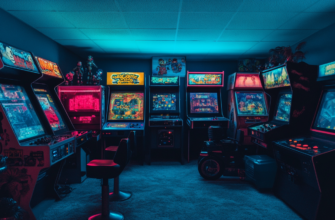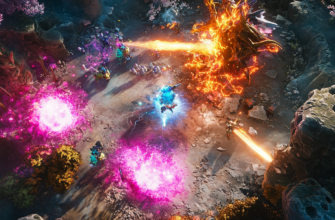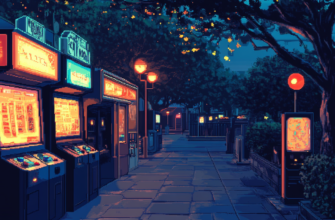- Striking the right balance between hardcore and casual gaming
- Definitions: hardcore vs. casual gaming
- Steps to balance hardcore and casual gaming
- Step 1: Evaluate your gaming goals
- Step 2: Set time limits for each type of game
- Step 3: Identify times when you play best
- Step 4: Vary your gaming library
- Step 5: Collaborate with friends
- Step 6: Keep your stress levels in check
- Practical tips to help you balance effectively
- Utilize game breaks wisely
- Invest in proper hardware
- Play in short intervals
- Conclusion: find that gaming sweet spot
Striking the right balance between hardcore and casual gaming
Hey, fellow gamers! We’ve all been there, right? Sometimes you want to dive head-first into the deep sea of hardcore games, other times you just want to unwind with something more laid-back. Gaming has something for everyone, depending on your mood and level of commitment at any given time. But how do you find that perfect balance between hardcore and casual gaming? How much time should you sink into high-strategy sessions, and when is it better to switch over to something more lighthearted? Let’s dive into it!
Definitions: hardcore vs. casual gaming
Before we get into the nitty-gritty of striking a balance, let’s quickly define what we mean by “hardcore” and “casual” games.
- Hardcore games: These generally require a high level of commitment. We’re talking about games that demand hours of strategic thinking, practice, and perseverance (think Elden Ring or StarCraft II). Hardcore players often spend weeks, if not months or even years, mastering their craft.
- Casual games: These games are easy to pick up, put down, and usually don’t penalize you heavily for mistakes. Think mobile games like Candy Crush or lightweight multiplayer games like Fall Guys. Casual gaming lets you relax, and you don’t typically need to invest tons of hours to enjoy them.
Now that we’ve defined the terms, let’s break down how to balance between these different gaming approaches.
Steps to balance hardcore and casual gaming
Step 1: Evaluate your gaming goals
Here’s where you want to start—ask yourself, “What am I looking to get out of gaming?” Are you in it for the long haul in terms of skill development, or do you just want to have a bit of fun after work? Maybe you want a mix of both?
If your goal is to improve your rank in competitive games like League of Legends or Rainbow Six Siege, that’s leaning on the hardcore side. If you’re more into gaming with buddies on the weekends, then you’ll probably spend more time on casual games. I’ve found that being honest with yourself about your gaming goals is essential to prevent burnout.
Step 2: Set time limits for each type of game
To find a perfect balance, try setting some time limits for your gaming sessions. You might designate, say, four hours a week for your hardcore games and the rest for chill, casual gaming. This technique helps prevent hardcore games from feeling like a grind, while keeping your casual games from feeling too “low-skill.”
An example from my life: I spent a month alternating between Dark Souls III (hardcore) and Overcooked (casual) and set myself a gaming schedule where I’d play the harder stuff only on the weekends (when I had more energy) and the lighter games during the weekdays. What happened? I stopped burning out and started seeing both styles as more enjoyable!
Step 3: Identify times when you play best
Believe it or not, timing plays a massive role in your enjoyment of different types of games. Personally, when I’m physically and mentally tired after work, trying to grind through a hardcore gaming session with a high learning curve just leads to frustration. On those days, jumping into a quick game of Rocket League or Slay the Spire (rogue-lite games are great too) is perfect.
On weekends or holidays, that’s when I dedicate larger slots for hardcore games like strategy games or RPGs. So, figure out when you’re most alert and focused, and that’s when you’ll want to play your more intense games.
Step 4: Vary your gaming library
Keeping a mix of both hardcore and casual games in your library makes visiting different gaming styles much easier. Instead of sinking 50 hours into one title, experiment with a variety of genres. Why not switch things up between a grueling tournament in Street Fighter and a chill sim like Stardew Valley?
I’ve found that variety does wonders for staying engaged. By bouncing between gaming genres, you give yourself more flexibility and reduce monotony. You might even consider investing in a game subscription service (like Xbox Game Pass or PlayStation Plus) to explore many different titles without breaking the bank.
Step 5: Collaborate with friends
The social aspect of gaming is HUGE. I can personally vouch for how playing with friends has helped me keep my “gaming diet” balanced. Scheduling some time to jam with friends over a casual party game like Apex Legends or Mario Kart can break up those solitary, grueling nights where you’re struggling through a tough single-player campaign.
Heads-up though, some friends are as competitive in casual games as they are in the hardcore ones. That can be fun too, but make sure you’re not pushing yourself too hard!
Step 6: Keep your stress levels in check
If you find that hardcore games are making you anxious or on-edge (we’ve all had THOSE ranked matches), it’s time to step back and know when to unplug. Trust me, it’s easy to get sucked into chasing higher rankings or achievements, but that can sometimes take the fun out of it. Recognize when frustration replaces enjoyment and switch to something soothing. A little downtime with casual indie games can do wonders to reset your stress levels.
For example, I’ve been super stressed after long multiplayer sessions in Dota 2, and unwinding with a good roguelike like Hades was the perfect remedy—low stakes but still stimulating.
Practical tips to help you balance effectively
Utilize game breaks wisely
One great thing that goes under the radar about balancing hardcore and casual games is that even hardcore nerds need breaks. How you manage those breaks is crucial. Don’t just step away from your PC—try playing a more relaxed game for 15-20 minutes to chill without losing momentum. Platforms like Twitch streamers and online communities have embraced this “multi-task” strategy, and for good reason.
Invest in proper hardware
Another key consideration? Your rig. Yep, some games are more demanding than others, so make sure your PC is up to par. If you’re serious about hardcore multiplayer games, you’ll want to have some beefy hardware—low ping, high FPS, and fast load times will certainly give you an edge. However, when you’re playing something casual, like point-and-click adventures or simulation games, mid-range hardware usually does the trick.
A quick pro tip from me: I upgraded my CPU and GPU to enjoy both worlds without lag, and the experience was night and day in terms of flexibility across genres. No more fixes in between—just smooth gaming.
Play in short intervals
Even hardcore games often benefit more from shorter, more focused sessions, as opposed to marathon binges. For example, 90 focused minutes in a hardcore game is often more productive (and fun) than grinding through for 3-4 hours straight. Same goes for casual games—keep it short and sweet.
Conclusion: find that gaming sweet spot
At the end of the day, gaming should bring you joy and entertainment. Whether you’re a hardcore veteran or a casual gamer, mixing up your playstyles can keep things fresh and exciting. Evaluating your gaming style, setting time limits, and understanding what fits your lifestyle and schedule are all effective ways to strike that perfect balance.
Look, everyone’s a little different, so the trick is to find *your* right balance based on what makes you happy. Give some of these strategies a shot, and I guarantee that gaming will become even more enjoyable.
Now, it’s time to hit the pause button! What game will you play today—a challenging roguelike or that cozy pixel-art sim you’ve been eyeing? Whatever you choose, play smart, play fair, and most importantly, play happy!
Let me know in the comments if you’ve found your perfect balance or if you need any pro tips!

















